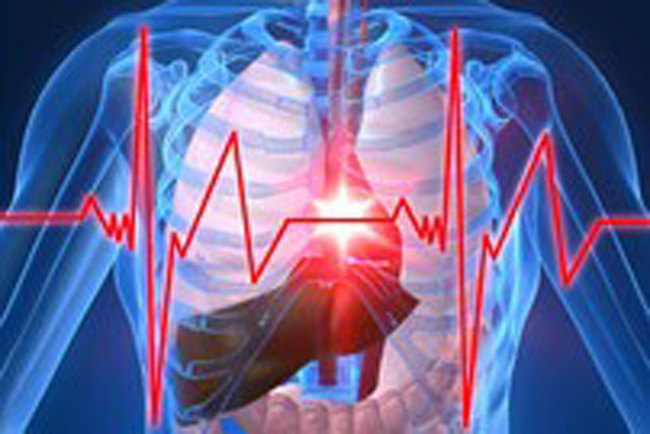 The abuse of Performance Enhancing Drugs (PED’s) has been associated with the occurrence of serious cardiovascular events in athletes, including the development of cardiomyopathy, arrhythmias, myocardial infarction, heart failure, hypertension and thrombosis.
The abuse of Performance Enhancing Drugs (PED’s) has been associated with the occurrence of serious cardiovascular events in athletes, including the development of cardiomyopathy, arrhythmias, myocardial infarction, heart failure, hypertension and thrombosis.
Androgenic anabolic steroids (AAS) disturb serum levels of high density lipoprotein (HDL), low density lipoprotein (LDL), lipoprotein A (Lp-A), total cholesterol and triglycerides.
Significant reduction of HDL and elevation of LDL and Lp-A increases the risk of atherogenesis, leading to atheromatosis and coronary heart disease.
The elevation of LDL parallels the decrease of HDL levels.
The adverse effect on serum lipids depends on the type of AAS used, the route of administration, combination of drugs, dosage and time of abuse.
However, studies have shown that the recovery on serum lipids after AAS cessation is strongly dependent on duration of the AAS abuse rather than the dosage.
Steroids have been also associated with arrhythmias (atrial fibrillation, ventricular fibrillation, tachycardia).
One of the reasons is electrolyte imbalance and hypercalcemia in particular, since it has been well established that under supraphysiological dosages, AAS increase electrolytes and minerals absorption (sodium, calcium, phosphorus, magnesium).
AAS users have been demonstrated to show larger left ventricular mass, larger posterior wall and interventricular septum thicknesses.
These changes lead to left ventricular hypertrophy, cardiomegaly and increase the risk of chronic heart failure, hypertension and arrhythmias.
Left ventricular hypertrophy decreases the stroke volume, due to the fact that the thick walls lead to small cardiac cavities. Progressively, the ejection fraction (EF) is reduced, since the cardiac muscle cannot effectively pump into the systemic circulation.
It should be noted that, the adverse effects in heart structure and function are expected after prolonged AAS abuse.
AAS abuse and especially androgens may increase blood pressure (BP), since they stimulate the production of aldosterone hormone from kidneys.
This mineral corticosteroid is responsible for sodium (and water) retention.
Some AAS also do aromatise, converted to estrogen, by the aromatase enzyme.
Estrogenic activity is linked with bloating and edema.
These two mechanisms are linked to hypertension.
AAS influence the hematological system via three main pathways.
Firstly, they stimulate erythropoiesis directly by increasing erythroid colony-forming units in the bone marrow and promoting their differentiation into erythropoietin-responsive cells.
Secondly, by promoting erythropoietin (EPO) synthesis in the kidney.
Thirdly, by increasing iron absorption in small intestine, that becomes substrate for hemoglobin protein synthesis.
Increased hemopoiesis leads to erythrocytosis and finally polycytemia.
The later could become a risky factor for cardiovascular disease, since blood viscosity increases dramatically, as hematocrite elevates.
AAS also influence platelet aggregation, that results in vascular disease due to enhanced blood-clot formation, increasing the risk of cardiovascular events (myocardial infarction, thrombotic stroke, cerebrovascular hemorrhage).
AAS prolong bleeding time and sabotage hemostasis.
INR, APTT increase and enhance fibrinolysis.
This mechanism is contradictive with the platelets aggregation effect.
In the bottom line, AAS break down coagulation processing, but on the other hand they induce clot formation, coming from fibrinogen.
Stimulants with sympathomimetic, adrenergic action elevate heart rate and BP and may exacerbate cardiac arrhythmias (atrial fibrillation, ventricular tachycardia), myocardial ischemia (vasoconstriction) resulting in sever or even fatal cardiovascular complications (heart attack, cardiac arrest).
Moreover studies have shown that stimulants such as clenbuterol have a direct cardiotoxic effect on the myocardium tissue with necrotic scars.
The abuse of CNS stimulants such as amphetamines, ephedrine alkaloids, methylxanthines (caffeine) beta2-agonists (clenbuterol-salbutamol) contribute to left ventricular hypertrophy, due to systemic hypertension.
Furthermore, their positive inotropic effect on the cardiac muscle increases the risk of cerebrovascular hemorrhage.
Somatotropin’s (hGH) prolonged abuse of increases permanently the size of internal organs, through IGF1 effect in tissues.
Effect on myocardial growth is evident, leading to cardiomegaly, increased rate of cardiovascular disease and progressive heart failure (Greg Kovacs 2013 RIP).
The enlarged heart muscle has greater oxygen demands, which under certain circumstances can lead to ischemic events.
The excess of GH and IGF-I causes a specific derangement of cardiomyocytes, leading to abnormalities in cardiac muscle structure and function, inducing a specific cardiomyopathy.
This is characterized by concentric cardiac hypertrophy, diastolic dysfunction and eventually impaired systolic function leading to heart failure.
The coexistence of hypertension and diabetes may further aggravate cardiomyopathy.
It should be noted that, when Florence Griffith-Joyner Flo Jo died at the age of 38 years, her heart was enlarged consistent with this specific cardiomyopathy.
Recombinant human erythropoietin (rEPO) induces erythropoiesis.
Erythrocythemia enhances hyperviscosity and increases the risk for thrombotic complications such as myocardial infarction, pulmonary embolism and cerebrovascular stroke.
Another possible pathogenetic mechanism for the adverse cardiovascular effects of rEPO’s abuse is the increased blood pressure due to erythrocythemia.